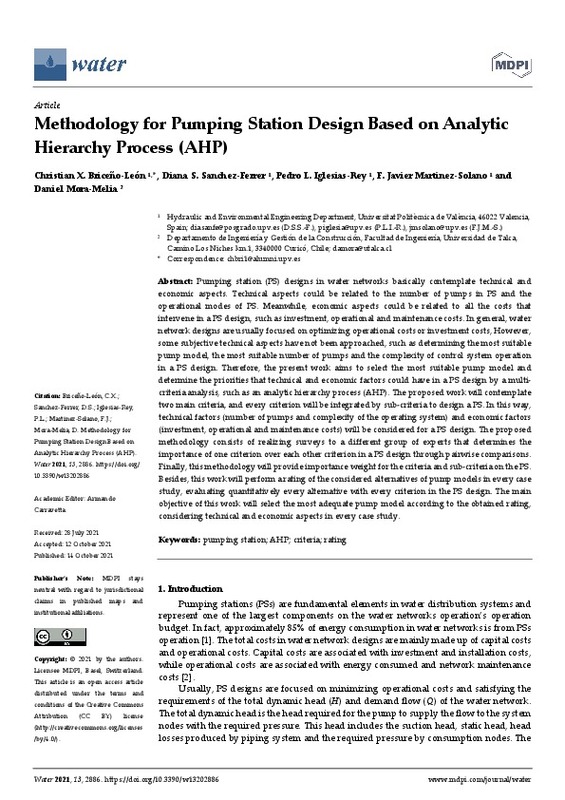JavaScript is disabled for your browser. Some features of this site may not work without it.
Buscar en RiuNet
Listar
Mi cuenta
Estadísticas
Ayuda RiuNet
Admin. UPV
Methodology for Pumping Station Design Based on Analytic Hierarchy Process (AHP)
Mostrar el registro completo del ítem
Briceño-León, CX.; Sanchez-Ferrer, DS.; Iglesias Rey, PL.; Martínez-Solano, FJ.; Mora-Melia, D. (2021). Methodology for Pumping Station Design Based on Analytic Hierarchy Process (AHP). Water. 13(20):1-35. https://doi.org/10.3390/w13202886
Por favor, use este identificador para citar o enlazar este ítem: http://hdl.handle.net/10251/180292
Ficheros en el ítem
Metadatos del ítem
| Título: | Methodology for Pumping Station Design Based on Analytic Hierarchy Process (AHP) | |
| Autor: | Briceño-León, Christian X. Sanchez-Ferrer, Diana S. | |
| Entidad UPV: |
|
|
| Fecha difusión: |
|
|
| Resumen: |
[EN] Pumping station (PS) designs in water networks basically contemplate technical and economic aspects. Technical aspects could be related to the number of pumps in PS and the operational modes of PS. Meanwhile, economic ...[+]
|
|
| Palabras clave: |
|
|
| Derechos de uso: | Reconocimiento (by) | |
| Fuente: |
|
|
| DOI: |
|
|
| Editorial: |
|
|
| Versión del editor: | https://doi.org/10.3390/w13202886 | |
| Coste APC: |
|
|
| Código del Proyecto: |
|
|
| Agradecimientos: |
|
|
| Tipo: |
|









